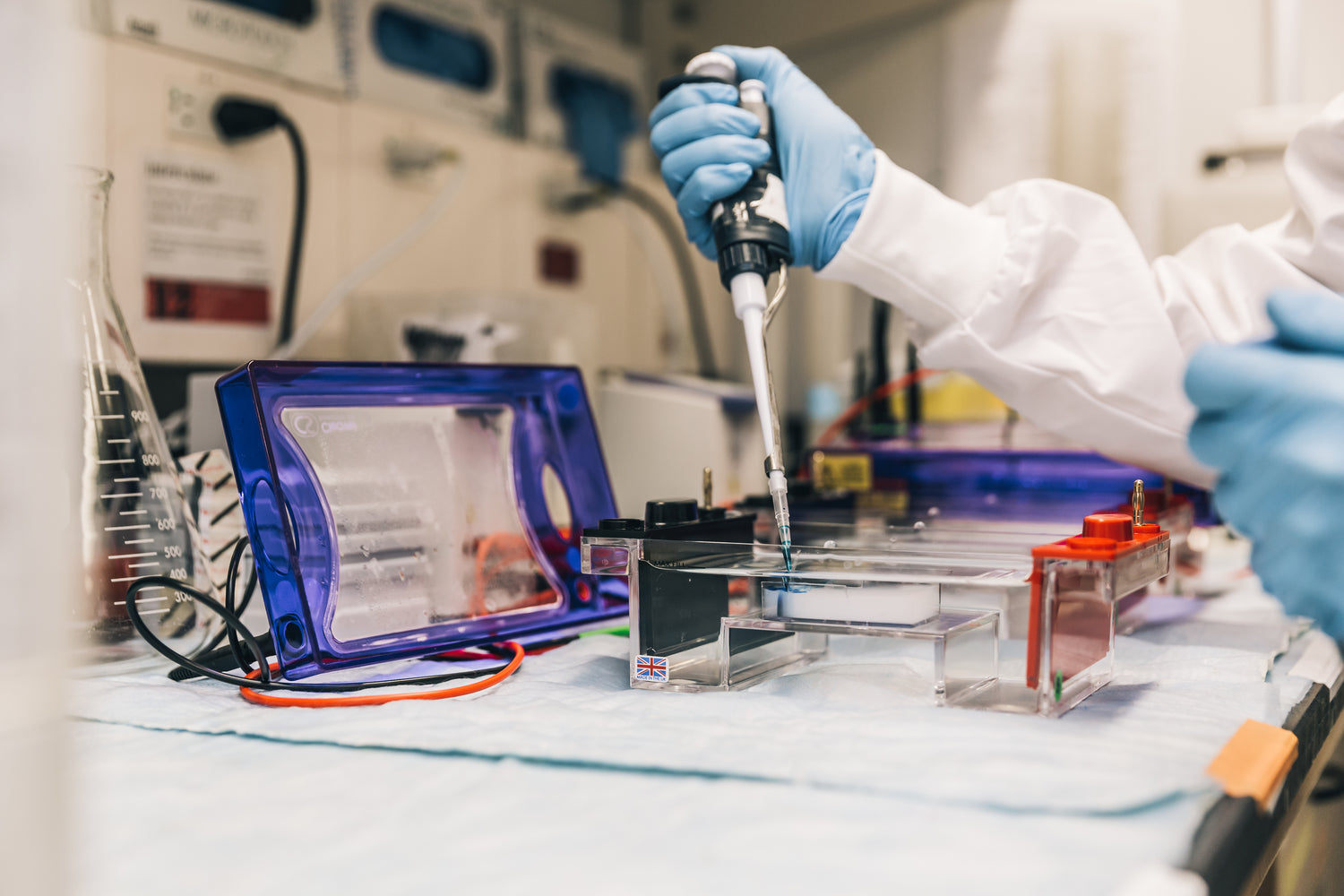Scientific Studies Datababse
Chaga Mushroom

Scientific Study
Antioxidant Effects
Study type:
In-vitro study (cellular study)
Purpose:
To investigate whether the antioxidant properties (the ability to neutralise or counteract harmful molecules known as free radicals) of chaga mushroom extract can help to reduce DNA damage in immune cells called lymphocytes. Lymphocytes are a type of white blood cell that plays a crucial role in our immune system. The lymphocytes for this study were taken from both healthy individuals and individuals with inflammatory bowel disease.
Dose:
3 concentrations of chaga mushroom extract were used: 50, 100 and 500 micrograms of chaga mushroom extract per mL of water
Additional intervention:
50 micrograms/ml of hydrogen peroxide were added to the cells 30 minutes after chaga mushroom treatment
Results:
Chaga mushroom extract reduced DNA damage in the lymphocytes. In the patient group, there was a significant 54.9% reduction in DNA damage, whilst there was a 34.9% reduction in the control group. These findings suggest that chaga extract may have the potential to be a valuable
supplement for inhibiting oxidative stress in general. Inhibiting oxidative stress is generally beneficial because excessive oxidative stress can damage cells, proteins, and DNA, leading to various diseases and accelerating the ageing process.
Year:
2007

Scientific Study
Heart Health
Study type:
Rodent study
Purpose:
To investigate the cardioprotective effect of chaga mushroom extract against myocardial ischemia/reperfusion injury in rats. Myocardial ischemia/reperfusion injury refers to the damage that occurs to the heart muscle when blood flow is temporarily restricted (ischemia) and then restored (reperfusion).
Dose:
150, 300, and 600 mg/kg of chaga mushroom extract
Duration:
7 days
Results:
The study demonstrated that treatment with chaga mushroom extract improved cardiac function and reduced the size of heart tissue damage (infarct size). Additionally, pretreatment with chaga mushroom extract increased the activity of protective enzymes and the production of a protein called SIRT1, which helps regulate cell health. It also reduced the levels of proteins associated with cellular stress and cell death. Chaga mushroom extract also prevented cell death caused by stress in heart muscle cells (cardiomyocytes). Reducing cell death in the heart tissue can be beneficial for maintaining heart health and preventing heart damage. These findings indicate that chaga mushroom extract has the potential to be a treatment option for cardiovascular diseases.
Year:
2021
Link:

Scientific Study
Allergies
Study type:
Rodent study
Purpose:
To investigate whether chaga mushroom extract can inhibit antibody production and a severe allergic reaction in mice. Allergies occur when the immune system produces too many antibodies in response to harmless substances, leading to the release of inflammatory substances like histamine, resulting in symptoms like itching, sneezing, or hives. Inhibiting antibody production is crucial in managing allergies as it helps decrease the exaggerated immune response and alleviate the associated symptoms.
Dose:
0.1, 1, and 10 mg/day of chaga mushroom extract dissolved
in water
Duration:
21 days
Results:
The study found that chaga mushroom extract could help prevent a severe allergic reaction called systemic anaphylactic shock in mice.
Chaga mushroom administration significantly reduced the levels of a specific type of antibody called IgE (Immunoglobulin E), which is associated with allergies. Since IgE is closely associated with allergic reactions, this reduction suggests that the Chaga mushroom extract may have a suppressive effect on the immune response involved in allergies. This effect is beneficial as it helps regulate and lessen the exaggerated immune response that causes allergy symptoms, leading to potential relief from allergies.
Additionally, when spleen cells from the mice were exposed to a substance called ovalbumin, those treated with chaga mushroom extract exhibited an increased production of a protein called IFN-γ (interferon-gamma), indicating a boost in immune responses. IFN-γ is generally associated with suppressing allergic reactions and can inhibit the production of IgE antibodies.
These results suggest that chaga mushroom extract has the potential to be used as a type of food that could help prevent allergies.
Year:
2013
Link:

Scientific Study
Anti Fatigue Effects
Study type:
Animal study
Purpose:
To investigate the anti-fatigue effects of chaga mushroom polysaccharides in mice.
Methods of evaluation:
In this study, the researchers conducted the forced swim test to investigate the impact of chaga mushroom polysaccharides on exercise endurance in mice. This test is a commonly used model to assess the potential anti-fatigue effects of various medications or substances.
Dose:
50 mg/kg/day of 3 polysaccharide fractions of chaga mushrooms dissolved in distilled water. Chaga mushroom fractions refer to specific components obtained from chaga mushrooms through fractionation or separation techniques. These fractions may have unique properties or compositions that differ from the original mushroom extract.
Duration:
30 days
Results:
The study found that the first polysaccharide fraction of chaga mushroom (fraction 1) exhibited potential anti-fatigue effects. When administered at a dose of 50 mg/kg, fraction 1 increased the duration of climbing and swimming in mice while reducing immobility time. Additionally, fraction 1 led to a decrease in fatigue-related metabolic parameters and significantly reduced the concentrations of serotonin (5-HT) in the mice's brain. Recent research suggests that high release of serotonin is associated with central fatigue, and decreasing serotonin production in the brain may improve endurance exercise performance. On the other hand, the second and third fractions of chaga mushroom did not exhibit any anti-fatigue effect.
Therefore, the study suggests that the first polysaccharide fraction of chaga mushroom may have beneficial effects by reducing fatigue and improving endurance, possibly through its influence on serotonin levels in the brain.
Year:
2020
Link:
